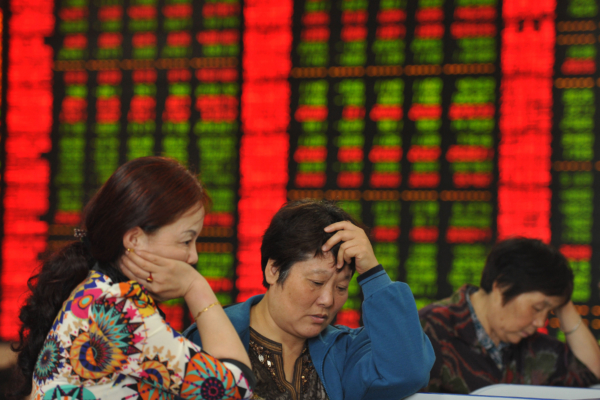On November 22, the three major indexes of A-shares collectively plummeted. “A-share major meltdown” surged to the top of hot search trends.
The mainland stock market opened low and continued to fall throughout the day, with all three major indexes declining. Individual stocks showed a trend of widespread declines, with nearly 5000 stocks falling across the market. By the close of trading, the Shanghai Composite Index dropped by 3.06%, the Shenzhen Component Index fell by 3.52%, and the ChiNext Index plummeted by 3.98%.
The total turnover of the Shanghai and Shenzhen stock markets reached nearly 1.8 trillion yuan, compared to over 170 billion on the 21st, with more than 4900 declining stocks.
Across the industry sectors, there were widespread declines with the photovoltaic equipment, biopharmaceuticals, diversified financials, securities, medical devices, semiconductors, insurance, chemical pharmaceuticals, and wind power equipment sectors leading the losses.
Medical and healthcare stocks declined, with Changshan Pharmaceutical falling by over 10%; the photovoltaic sector slid, with companies like Trina Solar falling by over 8%.
The A-share major meltdown has sparked attention and comments from netizens.
“Original Station”: It’s almost the year-end settlement, so a large amount of funds are fleeing.
“My Favorite dUb70 in This Lifetime”: They say bulls run short and bears long, but I never expected it to be this short, it’s truly outrageous.
“AhQingAhQingAhQingc27f3”: A-shares are too fragile, any slight changes can make it tumble recklessly.
The volatile situation in the A-share market has caused concerns among investors and analysts alike. The sharp decline in the indexes and the widespread negative sentiment towards various industry sectors reflect the current economic uncertainties facing the market. Investors are closely monitoring the situation and trying to assess the potential impacts on their portfolios. Experts suggest that caution and strategic planning are crucial in navigating through the ongoing market turbulence.

